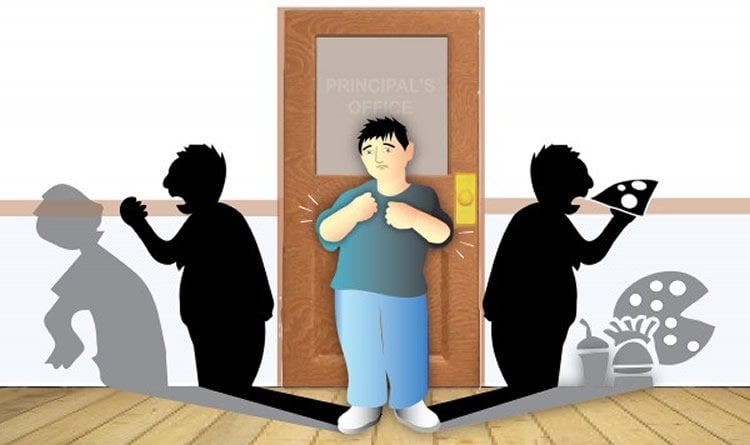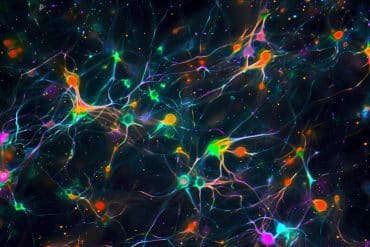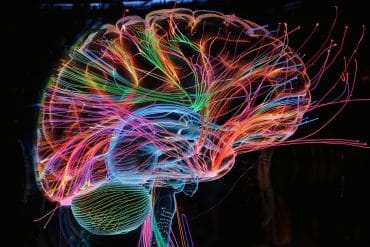Being bullied in childhood has been associated with increased risk for anxiety, depression and even eating disorders. But according to new research, it’s not only the victims who could be at risk psychologically, but also the bullies themselves.
Researchers at Duke Medicine and the University of North Carolina School of Medicine were surprised to find that in a study of 1,420 children, those who bullied others were twice as likely to display symptoms of bulimia, such as bingeing and purging, when compared to children who are not involved in bullying. The findings are published in the December issue of International Journal of Eating Disorders.
“For a long time, there’s been this story about bullies that they’re a little more hale and hearty,” said lead author William Copeland, Ph.D., associate professor of psychiatry and behavioral sciences at Duke University School of Medicine. “Maybe they’re good at manipulating social situations or getting out of trouble, but in this one area it seems that’s not the case at all. Maybe teasing others may sensitize them to their own body image issues, or afterward, they have regret for their actions that results in these symptoms like binge eating followed by purging or excess exercise.”
The findings come from an analysis of interviews from the Great Smoky Mountains Study, a database with more than two decades of health information on participants who enrolled at age 9. The data is considered a community sample and not representative of the U.S. population, but offers clues to how children ages 9 to 16 could be affected.
Participants were divided into four categories – children who were not at all involved in bullying; victims of bullying; children who sometimes were victims and sometimes were instigators; and children who were solely bullies, repeatedly abusing other children verbally and physically, socially excluding others, and rumor mongering, without ever becoming a victim themselves.
The researchers were not surprised to find that victims of peer abuse were generally at increased risk for eating disorders.
Children who were victims of bullying were at nearly twice the risk of displaying symptoms of anorexia (11.2 percent prevalence compared to 5.6 percent of children who were not involved in bullying) and bulimia (27.9 percent prevalence compared to 17.6 percent of children not involved in bullying).
Children who were both bullies and victims had the highest prevalence of anorexia symptoms (22.8 percent compared to 5.6 percent of the children not involved in bullying) and also the highest prevalence of binge eating (4.8 percent of children as compared to less than 1 percent of uninvolved children) and vomiting as a way to maintain their weight.
But the impact of bullying behavior on those who were bullies was also significant, with 30.8 percent of bullies having symptoms of bulimia compared to 17.6 percent of children not involved in bullying.
All of these behaviors can have devastating effects on the long-term health of children, said Cynthia M. Bulik, Ph.D., a distinguished professor of eating disorders at the UNC School of Medicine and a co-author on the findings.
“Sadly, humans do tend to be most critical about features in other people that they dislike most in themselves,” Bulik said. “The bullies’ own body dissatisfaction could fuel their taunting of others. Our findings tell us to raise our vigilance for eating disorders in anyone involved in bullying exchanges — regardless of whether they are the aggressor, the victim, or both.”

Although many children experience lifelong effects, many appear to cope and succeed after such experiences, Copeland said. He and colleagues are examining myriad factors, including looking at financial and educational outcomes, and even if bullying or being victimized is associated with genetic biomarkers.
“We want to do a better job of understanding why some people are able to experience the same things as others and be able to get through them without the same consequences,” Copeland said. “We really need to understand the resilience in those who have been bullied. That can help us determine the children who are going to need the most attention, and how we can promote those traits in others to increase their resilience.”
In addition to Copeland and Bulik, study authors include Nancy Zucker; Dieter Wolke; Suzet Tanya Lereya; and Elizabeth Jane Costello.
Funding: The study was sponsored by the National Institute of Mental Health (MH63970, MH63671, MH48085, MH080230); the National Institute on Drug Abuse (DA/MH11301); the William T. Grant Foundation; and the Economic and Social Research Council in the United Kingdom (ES/K003593/1).
Source: Samiha Khanna – Duke University
Image Source: The image is credited to Mark Dubowski
Original Research: Abstract for “Does childhood bullying predict eating disorder symptoms? A prospective, longitudinal analysis” by William E. Copeland, Cynthia M. Bulik, Nancy Zucker, Dieter Wolke, Suzet Tanya Lereya and Elizabeth Jane Costello in International Journal of Eating Disorders. Published online September 4 2015 doi:10.1002/eat.22459
Abstract
Does childhood bullying predict eating disorder symptoms? A prospective, longitudinal analysis
Objective
Bullying is a common childhood experience with enduring psychosocial consequences. The aim of this study was to test whether bullying increases risk for eating disorder symptoms.
Method
Ten waves of data on 1,420 participants between ages 9 and 25 were used from the prospective population-based Great Smoky Mountains Study. Structured interviews were used to assess bullying involvement and symptoms of anorexia nervosa and bulimia nervosa as well as associated features. Bullying involvement was categorized as not involved, bully only, victim only, or both bully and victim (bully-victims).
Results
Within childhood/adolescence, victims of bullying were at increased risk for symptoms of anorexia nervosa and bulimia nervosa as well as associated features. These associations persisted after accounting for prior eating disorder symptom status as well as preexisting psychiatric status and family adversities. Bullies were at increased risk of symptoms of bulimia and associated features of eating disorders, and bully-victims had higher levels of anorexia symptoms. In terms of individual items, victims were at risk for binge eating, and bully-victims had more binge eating and use of vomiting as a compensatory behavior. There was little evidence in this sample that these effects differed by sex. Childhood bullying status was not associated with increased risk for persistent eating disorder symptoms into adulthood (ages 19, 21, and 25).
Discussion
Bullying predicts eating disorder symptoms for both bullies and victims. Bullying involvement should be a part of risk assessment and treatment planning for children with eating problems.
“Does childhood bullying predict eating disorder symptoms? A prospective, longitudinal analysis” by William E. Copeland, Cynthia M. Bulik, Nancy Zucker, Dieter Wolke, Suzet Tanya Lereya and Elizabeth Jane Costello in International Journal of Eating Disorders. Published online September 4 2015 doi:10.1002/eat.22459






